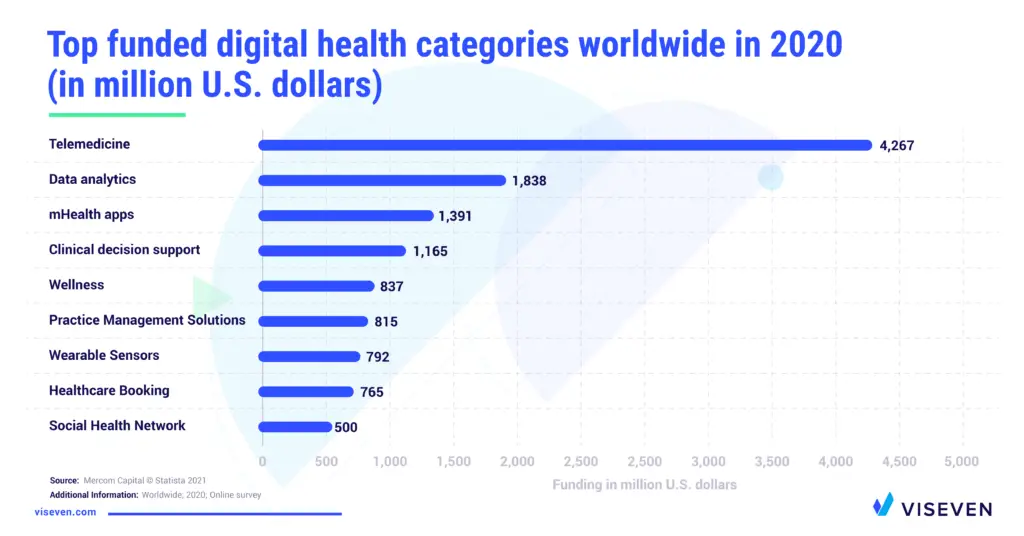Content is king.
Probably, you’ve heard these three words many times.
But only a few know that it’s the title of Bill Gates’ essay published on the Microsoft website in 1996.
Here’s a little excerpt from it:
The Internet also allows information to be distributed worldwide at basically zero marginal cost to the publisher. Opportunities are remarkable, and many companies are laying plans to create content for the Internet.
Now it’s finally true for healthcare and life sciences.
In digital marketing, medical content is experiencing groundbreaking changes. Having gotten through the COVID-19 pandemic, we realized the pivotal role of technology in human interaction and business engagement.
The Clinician of the Future 2022 report made by Ipsos reflects these significant changes:
- 86% of clinicians think that the rise of patients informed about their health conditions is a driving change in healthcare
- 90% of clinicians agree that quality measures, including patient satisfaction, have driven change in the industry in the last decade
More patients consider themselves customers. More healthcare professionals (HCPs) naturally require the same customer-focused attitude where face-to-face visits are only the tip of the iceberg.
It means that one of the healthcare marketers’ top priorities is to reconsider how they create and provide their medical content.

If you regularly google the equivalent topics to become a medical content ninja, you’re in the right place. Regardless of your target audience — patients, doctors, pharmacists, or any other group of HCPs — this tutorial will help you:
- discover the channels that are most necessary in medical content marketing
- learn the tips to get started with these channels
- grasp the practices to optimize your content strategy in healthcare and make it successful
Prepare a cup of your favorite beverage, and let’s begin!
The Most Vital Channels for Medical Content Creation

A customer-first paradigm has widened the boundaries of medical content, its creation, and its marketing. With that in mind, we highlighted the most vital channels for medical content marketers so far:
- Medical Websites
- Medical Blogs
- Landing Pages
- mHealth Apps
- SMS
- Messaging Apps
- Social Media
- Video
Let’s analyze every channel and see how you can use them within your content strategy.
Optimize Your Medical Website Content
A website is a primary channel for any non-commercial institution or business in healthcare and life sciences. The majority of website traffic comes from search engines. That’s why when you create medical website content, you should optimize it according to the search engine optimization (SEO) practice called on-page SEO or on-site SEO.
Also, any specialist who creates medical content for websites should comply with three factors that affect the website quality:
- User experience (UX) is a set of practices applied to make websites more convenient to visit. In other words, UX is the way people feel when they engage with a website and its content. Medical websites with better UX get more conversions.
- User interface (UI) is the way people interact with a website. The typical UI elements of a medical website are menus, fields, tabs, buttons, and beyond. This specific type of medical website content requires in-depth analysis and research before creating. The level of UX mostly depends on UI.
- Customer experience (CX) is an overall impression of customers over a business. In other words, CX is how a medical brand engages with its clients. Here’s where website content plays a crucial role, along with customer support.
A medical website should have enough content resources to generate traffic and constantly increase it. There are three main types of medical website content resources you can use for that:
- Webinars. Generate leads by inviting professionals and non-experts to online events to discuss various topics and trends.
- Events. Tell how your team participates in offline healthcare events such as conferences and presentations.
- Blog. Post about your business and niche using multiple kinds of healthcare content.
Become an Authority with an SEO-Friendly Blog
Blogging is the best way to grow a medical website organically.
If you regularly fill a medical blog with organic healthcare content, you’ll get the most influential source for increasing your website audience.
At a proper pace, website traffic will increase, leading to more readers and conversions. More conversions result in higher profit. Here’s how to produce relevant, captivating, and high-quality healthcare content for this channel:
- Master SEO techniques. Learn how search engines work to improve the content writing process and boost the positions of your medical content on search engine page results (SERPs). Start with search engine optimization basics such as crawling, indexing, ranking, keyword research, competitor analysis, and link building.
- Write on multiple topics. Divide your content into a few categories to make it varied and engaging. These categories can include short articles about news and updates in your company (its services and products), research-based long reads, infographics about industry trends, and beyond.
- Provide unique insights. Publish information that no one posted before to become an industry influencer. Google loves when content writing on health has real value. It can be case studies about clinical research, articles that contain statistics, interviews with clients (or patients), and beyond.
- Post regularly. Create content plans and schedule articles every month. The more you post, the more traffic you can generate.
- Collaborate with other influencers and web resources. Build a contact network around websites that has the potential to increase your site rankings and get your audience interested. Invite other companies and authors to write for you.
- Share content via social media and email. That’s how you’ll facilitate the growth of each channel.
- Be patient. Keep posting no matter what. Blogging brings benefits in the long run.
Create Landing Pages to Convert Your Leads
A medical landing page is a single-page website where your leads land after you engage them with your medical content on any other marketing channel. The goal of a medical landing page is to convert a lead into a customer.
A medical landing page content depends on its marketing objective.
Must-have content elements for a medical landing page:
- A catchy headline that shows the value
- A simple copy that evokes interest
- An image that reflects the landing page goal
- The lead form for filling the lead’s personal information
- A call-to-action button for collecting the lead’s personal information
Develop a Mobile App to Increase the Target Audience
As of 2021, there are almost 6.3 billion smartphone users worldwide.
In the United States alone, more than 84% of the population owns a smartphone.
Mobile apps changed the way we utilize health information for good. According to Deloitte, more than 350,000 health apps are available from various app stores.

The niche of mobile health apps is the third-largest category in the digital health industry after telemedicine and data analytics, with funding of $1.4 billion.
Medical content development in mobile apps can increase the target audience of any institution or business that belongs to healthcare:
- Health apps can be helpful to users who want to improve their health conditions.
- Healthcare marketing apps can help marketers optimize their daily activities such as task organization, team communication, customer engagement, results tracking, and beyond.
- Doctor apps can streamline the medical affairs of healthcare professionals of any kind. In such an app, doctors can store documentation, track patient visits, provide instructions, and beyond.
- Patient apps can assist users who are patients in a certain clinic or hospital with health monitoring, medication reminders, and other features.
Note: Viseven can develop a mobile health app of any type according to your requirements and needs.
Use SMS as Notifications
Short Message Service or SMS is a traditional medical content channel used by HCPs to send:
- Critical information like health alerts or test results.
- Educational information like diet or pregnancy tips.
- Reminders about appointments or prescription refills.
- Feedback collection requests.
SMS sending recommendations:
- Choose the best sending time
- Send only the information that has the value
Boost Customer Experience with Messaging Apps
As a decent alternative to SMS, messengers or messaging apps are an effective medical content channel to generate high-quality leads and make communication with customers more personal.
Here are a few tips to help your company connect with customers in conversation:
- Develop live chat with a chatbot for your medical website. Boost customer experience and optimize the communication for visitors searching for simple answers for basic information.
- Enable live chat widgets on your medical website. Allow customers to chat via the platforms they like. For instance, you can add Messenger and WhatsApp chat widgets to your medical website.
- Test messaging ads. Launch targeted advertising campaigns as an alternative to social media ads. Targeting online ads via messengers can be a profitable opportunity to boost marketing results. For example, Messenger ads can have 61% higher message-per-reach than photo ads on Facebook.
When creating content for your messaging ads:
- Keep a copy short
- Use visuals that attract attention
When answering your customers in messaging apps, don’t forget to:
- Respond quickly to gain their trust
- Keep the conversation personal and friendly
Boost Social Media to Build Stronger Connections
Social media is an extraordinary tool that allows medical marketers to re-establish relationships with their audiences using a variety of content formats on multiple platforms.
There are three factors that determine any medical social media strategy:
- Social media platforms. Before creating medical content for social media, figure out which platforms are the most important for your clients (or patients).
- Content formats. You’ll need to find the formats that will bring more likes and impressions to your accounts. It can be anything from a text publication with a visual to an audio podcast.
- The type of content. In addition to creating organic posts for free, you can use an advertising platform like Google Ads or Facebook Ads Manager to target different audiences with online ads based on particular advertising objectives.
If you want to succeed in creating social media content for healthcare, always listen to the feedback you get in the form of comments and messages, use a positive tone of voice, and be simple and precise.
Here are a few important content touchpoints:
- Inform. Tell the news, schedule events, and do everything for everyone to stay up to date.
- Educate. Provide professional tips on the topics related to your healthcare niche.
- Inspire. Share reviews of satisfied clients (or patients), write human behind-the-scenes stories about your business, and beyond.
- Support. Answer people who contact your profiles directly.
Have a Plan for Medical Content Sent via Email
Email has always been a tried-and-tested channel in the medical world. However, the laws that worked a few years back have no power anymore.
Even die-hard marketing professionals should accept that the email creation process in healthcare has become more consumer-centric.
If you’re a rookie in sending such emails, here are a few basic practices to get started:
- Learn email marketing metrics. They’ll help you measure the success of your email campaigns. The main metrics are open rate, click rate, bounce rate, conversion rate, spam score, return on investment (ROI), customer lifetime value (CLV), and cost per acquisition (CPA).
- Choose an email marketing platform. That’s the place where you’ll create and optimize your email campaigns.
- Segment your audience. It’s the first practice you should exercise once you choose your platform and set your goals. Email segmentation is necessary to send more relevant information and more specific offers.
- Experiment all the time. This practice is called A/B testing. Test different audiences and content to improve your results.
A newsletter is the backbone of the medical content you send via email. Before sending your newsletter, you must have a comprehensive content plan that should conform to three things:
- Content. Plan the content to send valuable content and attractive offers. The main thing here is to learn how to balance information and benefit.
- Time. Choose the best days of the week and time of the day to send your medical content. If you don’t know when to do it, A/B test it.
- Frequency. Experiment with your emails to know the number of sending days.
When creating your medical email, take into account:
- Subject line. Keep it relevant, interesting, straightforward, and short.
- Preheader. Find the golden middle between its length and the information you need to send.
- Body text. Pick ready-made email templates from your platform. To get better results, test different templates to find the best option.
Shoot Videos with Best Solutions for Content (for Medical Video)
Video marketing is one of the most powerful methods to promote healthcare products and services. It’s a perfect alternative to television which has been a traditional patient engagement channel for years.
According to HubSpot:
- 86% of businesses use videos as a marketing tool
- 92% of marketers claim videos are an important part of their strategy
Unless you want to launch advertising campaigns, video is a must-use healthcare marketing practice because it doesn’t require a budget whatsoever. All you need is a smartphone with a last-generation camera and imagination.
It’s okay to focus on several platforms considering the information above. It depends on your goals, the time you’re ready to spend, and your brand voice. Here’s how content practices on the major platforms differ from each other:
- YouTube — longer content that reveals the subject with lots of facts and details
- Instagram — Stories adorned with text and stickers or tiktokish Reels
- TikTok — consice amusing videos
And here are a few golden rules you need to know before getting started:
- Viewers got used to watching tons of content every day. Lure their attention within three seconds.
- Viewers love storytelling. Create stories, not promotions.
- Test live streaming as an alternative to short and longer videos.
- Watch the content of your competitors and other creators to get more expertise. Watch a lot.
How to Optimize a Medical Content Strategy
Medical content can have an immense impact when created and targeted right. But here’s the question. What is medical content writing, designing, and targeting in its essence?
It’s a lot of conscious efforts and hard work because marketers must simultaneously engage with multiple channels and hundreds and even thousands of customers.
However, two advanced techniques can significantly simplify everything.
Build an Omnichannel Environment
Omnichannel marketing is a set of activities that provide customers with a personalized experience by integrating all online and non-digital channels into a single environment.
It allows companies to use medical content and fulfill their objectives more effectively thanks to the ability to:
- find out what content channels customers use and plan their journey in advance
- segment customers into multiple target groups
- tailor personalized information to customers at the right time and with no spam
- build consistent communication and strong connections with customers
- automate omnichannel activities with the help of a single marketing platform
Master Modular Content Creation
The modular approach is a marketing practice that streamlines omnichannel content creation by breaking down content into the tiniest possible semantic pieces called modules.

A content creator can reuse, interchange, and customize modules across multiple channels and target audiences which allows:
- reduce content production period
- cut production costs and allocate smaller content marketing budgets
- come up with large-scale personalized segmentation strategies
- accelerate the Medical, Legal and Regulatory (MLR) review process for pharma content
- dedicate more time to other advertising affairs
End-to-End Medical Content Management Solution in Pharma
If you want to use omnichannel and modular approaches to accomplish your goals with medical content, Viseven can develop a custom end-to-end platform based on your strategy. Send us an email or a message via a contact form to get a full consultation, and we’ll get back to you shortly.
Also, you’re welcome to test eWizard — our content experience platform where you can create modular medical content for multiple channels.
The post Medical Content: The Most Vital Channels in Omnichannel appeared first on Viseven.